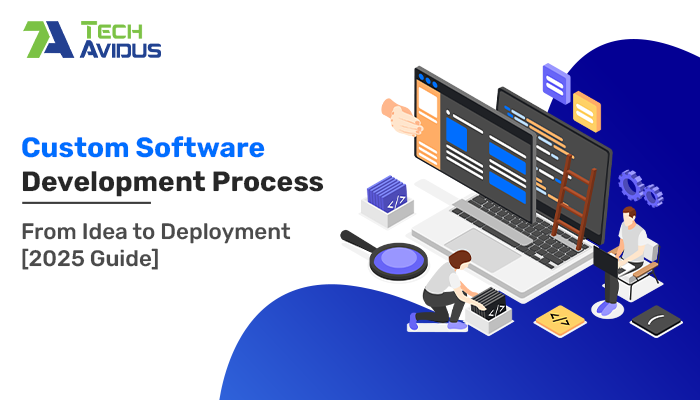
In today’s fast-paced digital world, businesses need software solutions tailored to their unique requirements. A well-structured custom software development process ensures efficiency, scalability, and long-term success. But what does the journey from an idea to a fully deployed product entail? This guide provides a comprehensive breakdown of the critical stages, methodologies, and best practices to help businesses navigate the development process smoothly.
Every successful software solution begins with a well-defined idea. However, transforming an idea into a fully functional product requires careful planning.
At this stage, businesses should document their requirements in a Software Requirements Specification (SRS) to ensure a structured approach to development.
Statistic: According to a McKinsey report, 66% of software projects experience cost overruns due to poor initial planning.
Meticulous planning ensures a streamlined development process, reducing risks and improving project outcomes.
Prototyping provides a preview of the final product, helping refine features before full-scale development begins.
Statistic: Studies show that projects using prototyping reduce development costs by up to 30% by identifying issues early.
Once the planning phase is complete, the focus shifts to designing and developing the software.
Statistic: 75% of users judge a company's credibility based on its website or software’s design and usability.
Thorough testing is essential in the custom software development process to identify and fix bugs before deployment.
A comprehensive QA strategy guarantees a reliable, high-performing software product.
Statistic: According to Capgemini, software bugs cost the global economy $1.1 trillion annually due to lost productivity and security breaches.
Following successful testing, the software is ready for deployment.
A phased rollout or beta testing approach can help detect and resolve any last-minute issues before a full-scale launch.
The software development process does not end at deployment. Ongoing maintenance is crucial for long-term success.
Statistic: Research by IBM indicates that fixing a software bug after deployment can cost 100 times more than fixing it during development.
The custom software development process is a structured journey that transforms a business idea into a high-quality, scalable solution. By following a systematic approach—starting with requirement analysis, planning, design, development, testing, deployment, and ongoing maintenance—organizations can ensure long-term software success.
For businesses seeking a reliable and tailored software solution, partnering with an experienced development team is essential. At TechAvidus, we specialize in crafting custom software solutions that align with your business goals. Get in touch with us today to discuss how we can turn your vision into a reality.
We have the most experienced Top 1% of Tech Talent Teams who can deliver superior technology solutions.
All Rights Reserved. Copyright © 2025 | TechAvidus